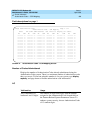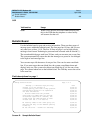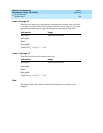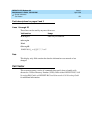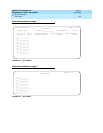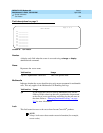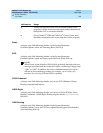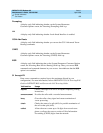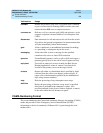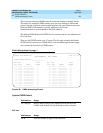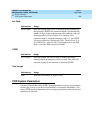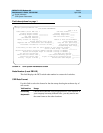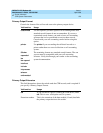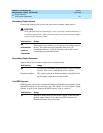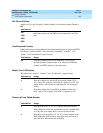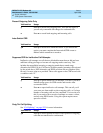
DEFINITY ECS Release 8.2
Administrator’s Guide
555-233-506
Issue 1
April 2000
Screen reference
506CAMA Numbering Format
17
CAMA Numbering Format
This screen administers the Centralized Automatic Message Accounting (CAMA)
trunks and provides Caller’s Emergency Service Identification (CESID)
information to the local community’s Enhanced 911 system through the local
tandem office.
consider
Defines the resource (split, skill, or location) that is checked
as part of a Best Service Routing (BSR) consider series and
obtains the data BSR uses to compare resources.
converse-on
Delivers a call to a converse split (skill) and activates a voice
response script that is housed within a Voice Response Unit
(VRU).
disconnect
Ends treatment of a call and removes the call from the switch.
Also allows the optional assignment of an announcement that
will play immediately before the disconnect.
goto
Allows conditional or unconditional movement (branching)
to a preceding or subsequent step in the vector.
messaging
Allows the caller to leave a message for the specified
extension or the active or latest VDN extension.
queue-to
Unconditionally queues a call to a split or skill and assigns a
queueing priority level to the call in case all agents are busy.
reply-best
Used only in status poll vectors in multi-site Best Service
Routing applications, where it “returns” best data for its
location to the primary vector on the origin switch.
route-to
Routes calls either to a destination that is specified by digits
collected from the caller or an adjunct (route-to digits), or
routes calls to the destination specified by the administered
digit string (route-to number).
stop
Halts the processing of any subsequent vector steps.
wait-time
Delays the processing of the next vector step if a specified
delay time is included in the command’s syntax. Also
provides feedback (in the form of silence, ringback, or music)
to the caller while the call advances in queue.
Valid entries Usage



